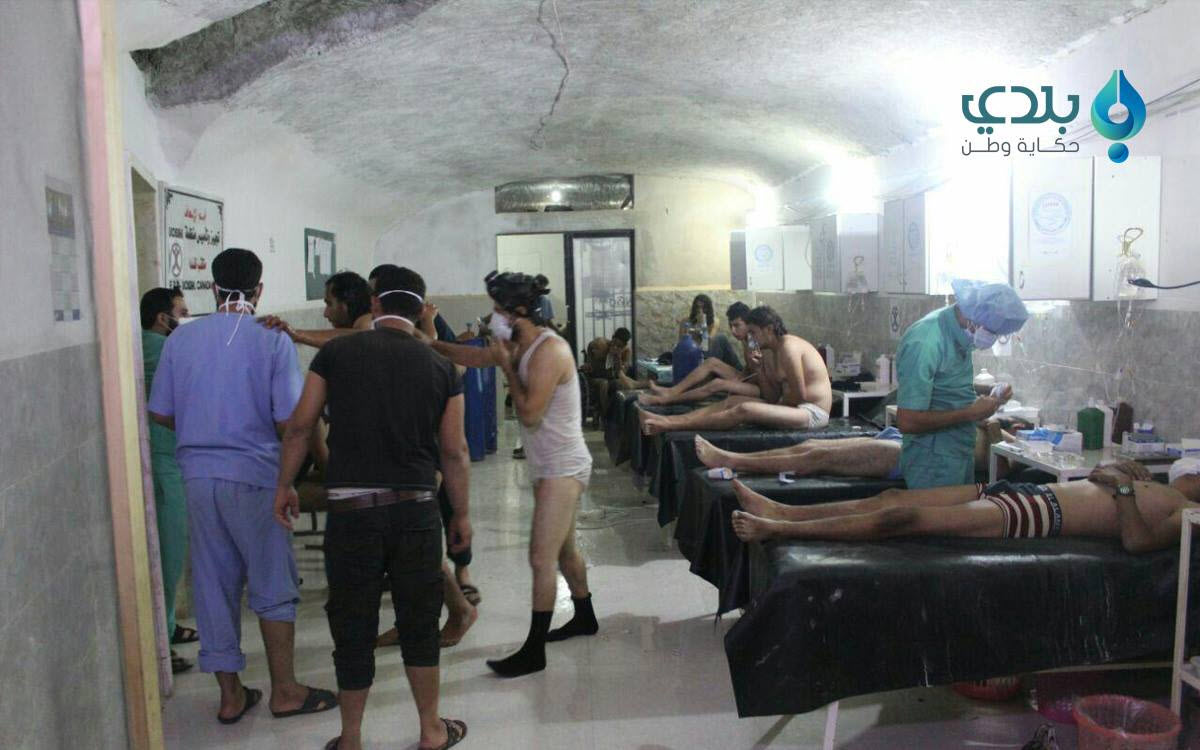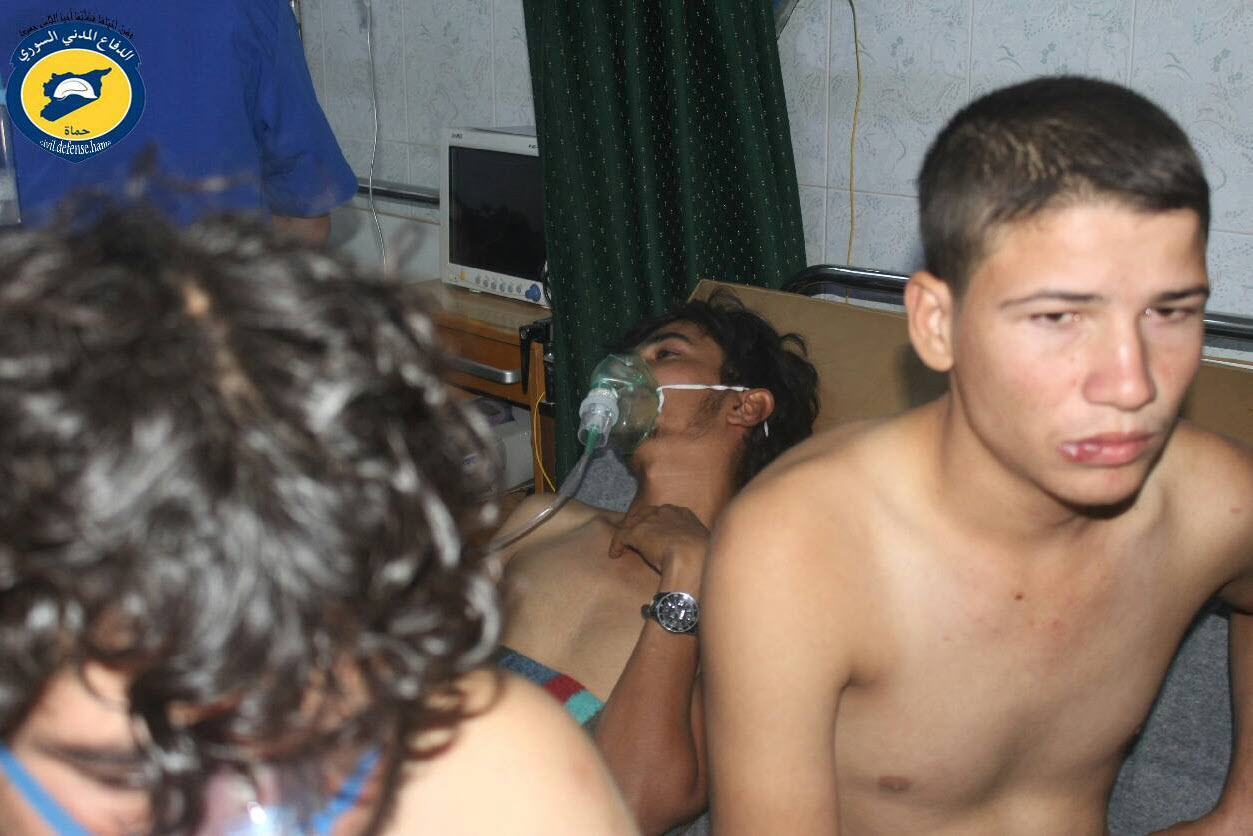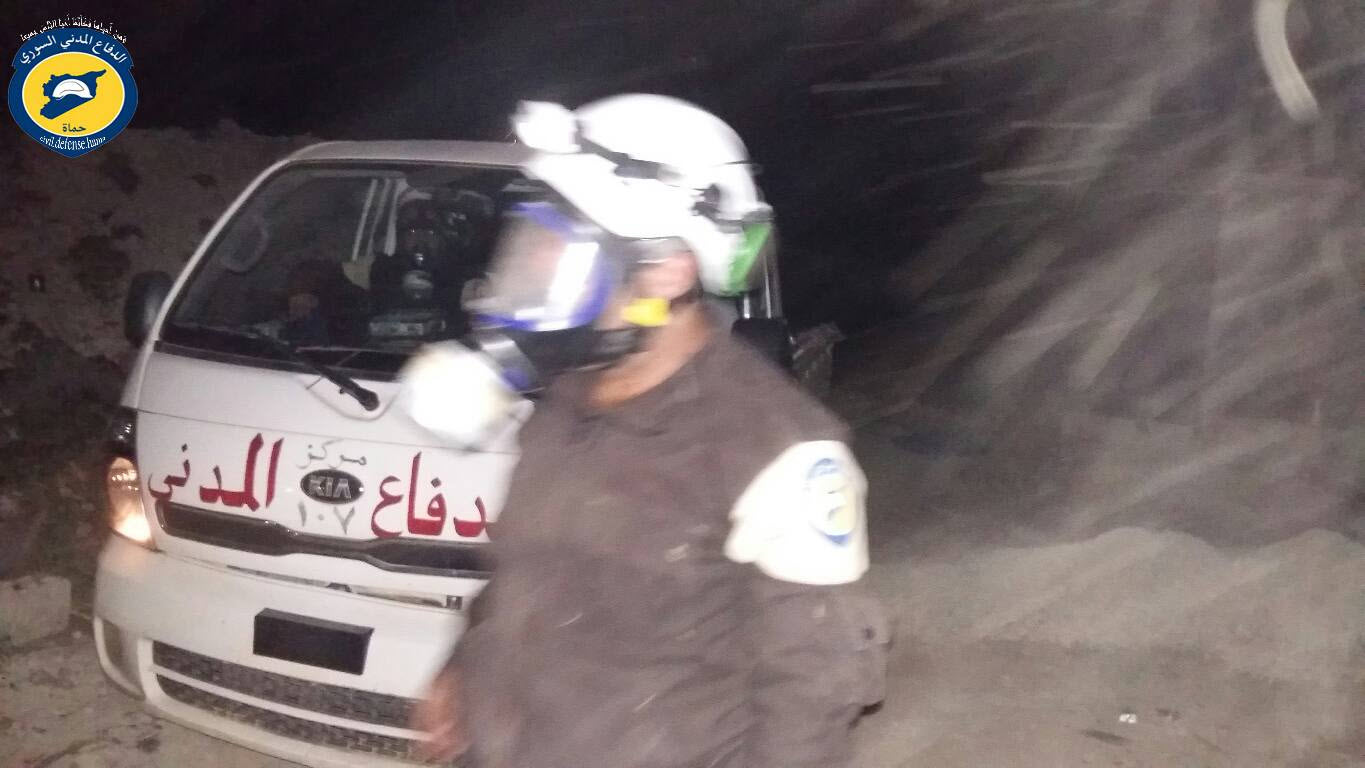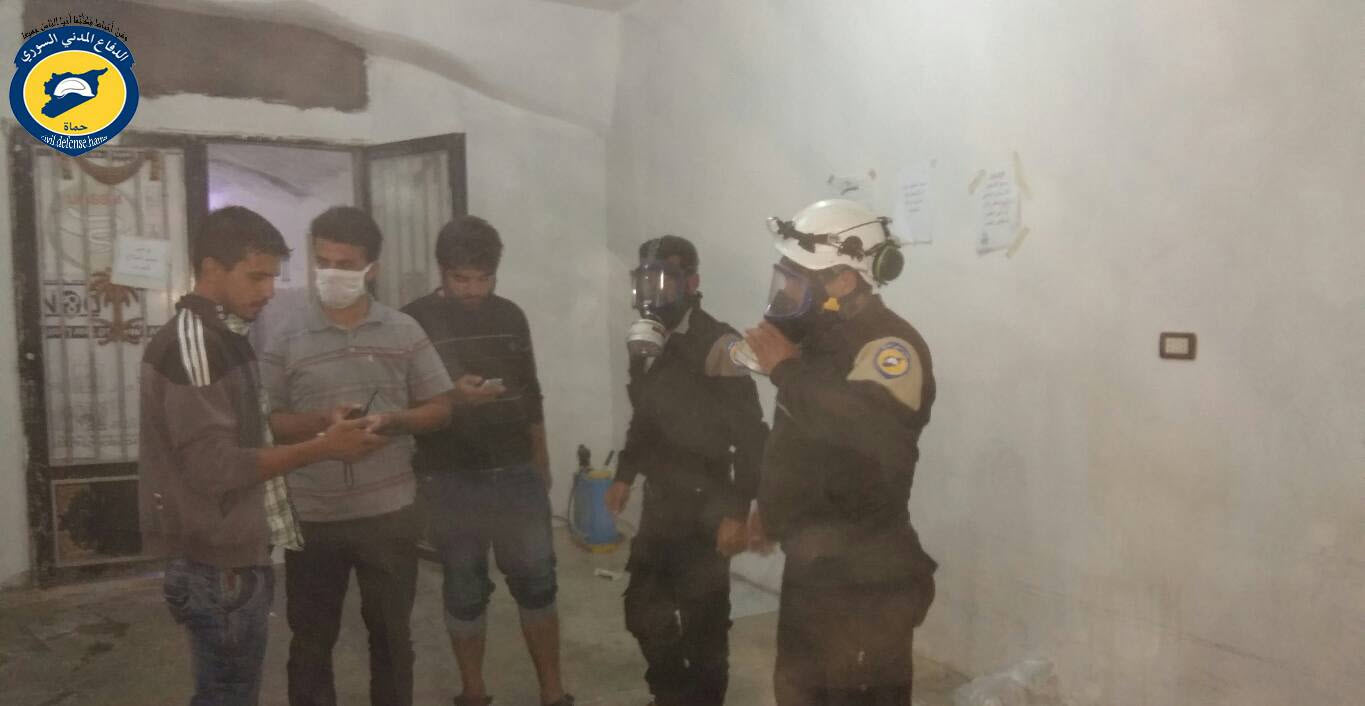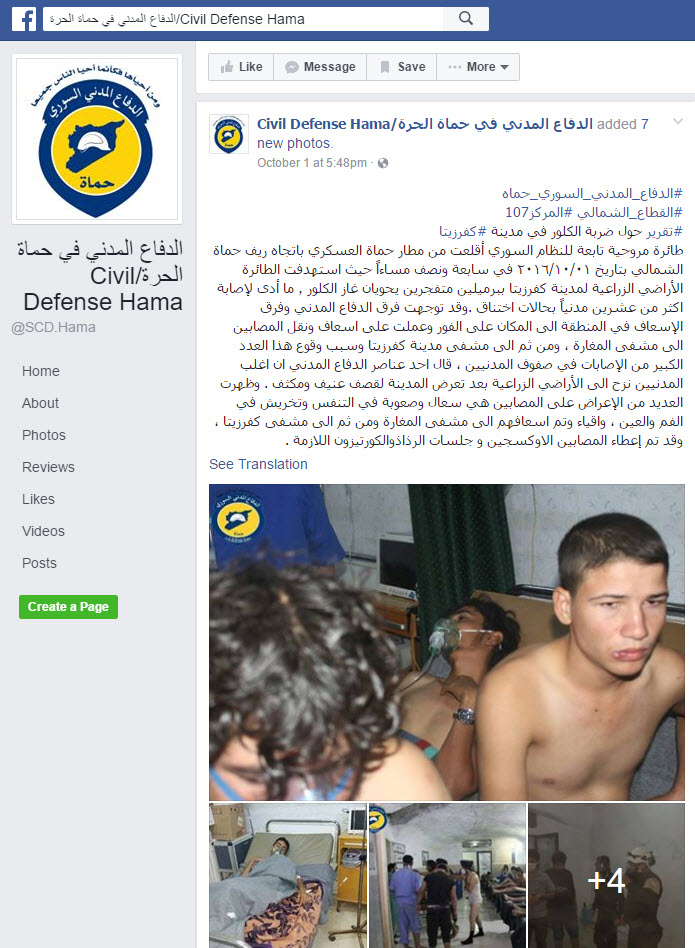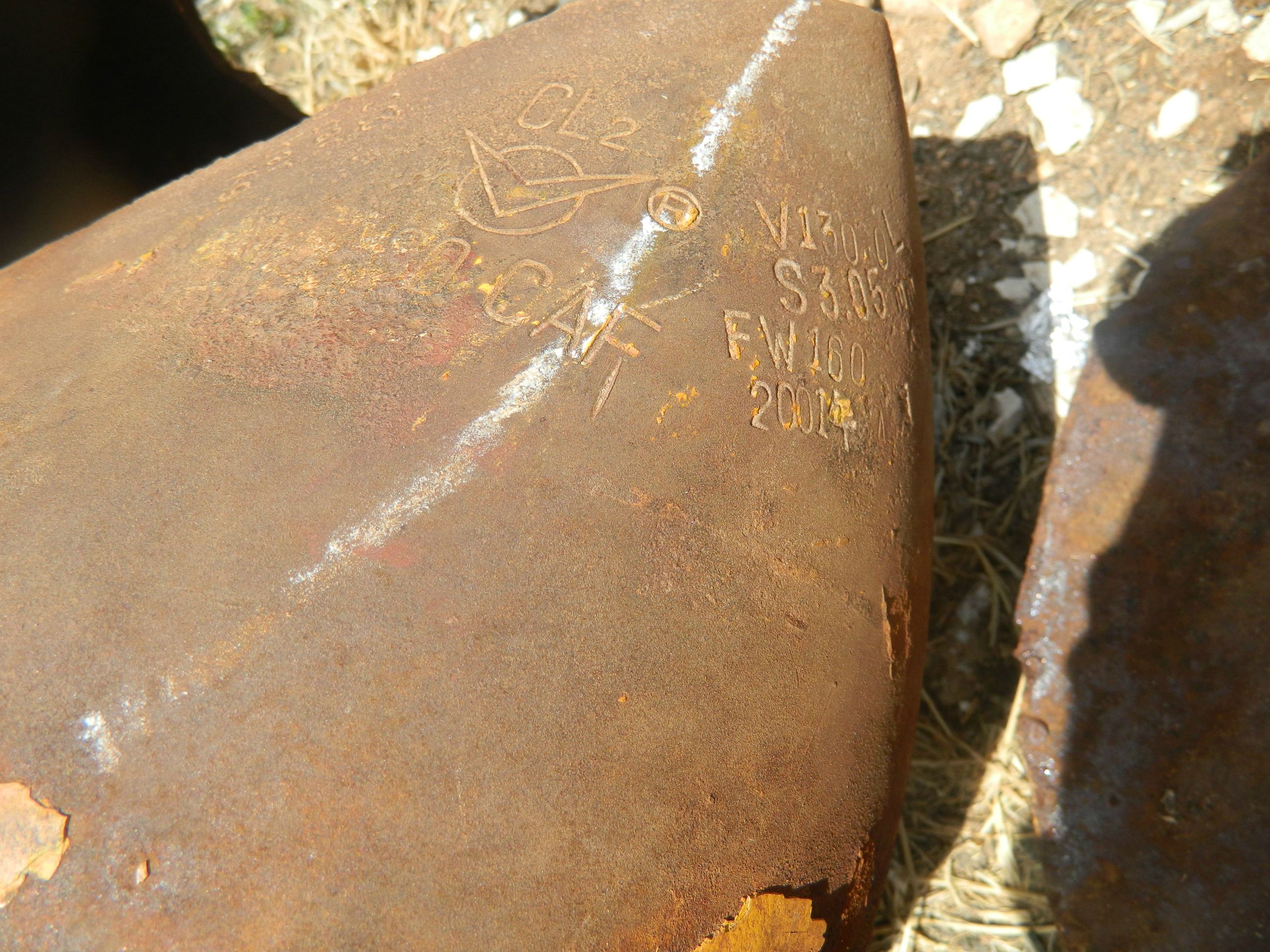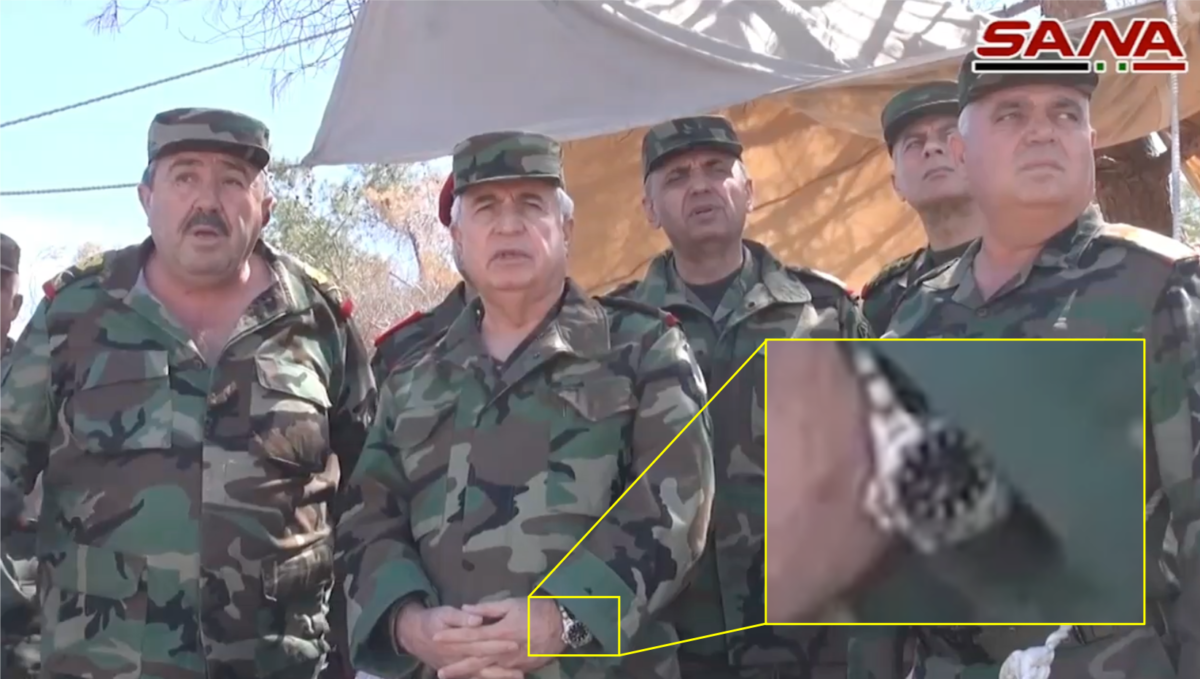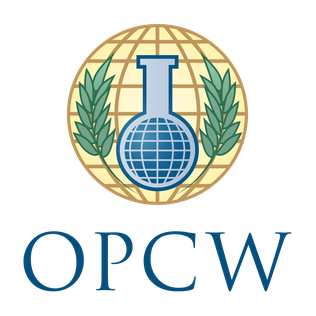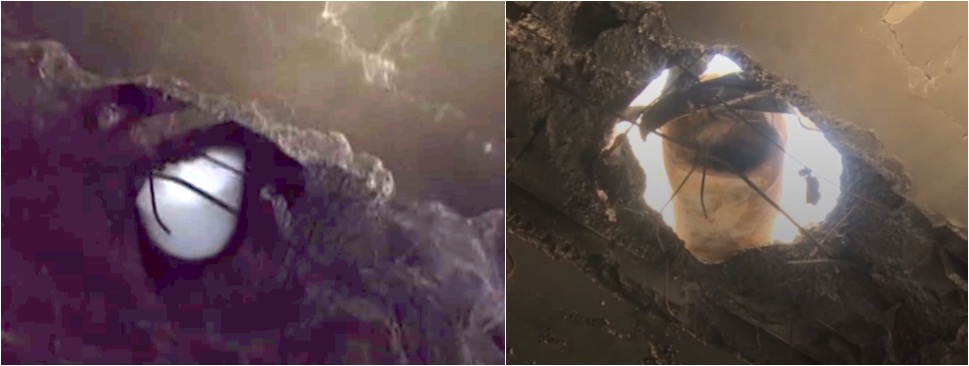Examining the Chlorine Attack in Kafarzita, Hama, October 1st 2016
On October 1st 2016 and October 2nd 2016, videos from Kafarzita’s YouTube channel and photos from the Civil Defense Team’s twitter account were posted online alleged the use of chlorine gas by the Syrian government in Kafarzita, Hama on October 1st.
In this article we will examine videos and other open source material that were shared online to understand as many details as possible about what actually happened in this incident.
The Syrian Archive, a platform that collects, curates, verifies and preserves visual documentation of human rights violations in Syria has collect and analysed four videos related to this incident.
Details on some of the videos are below:
Victims Being Rescued and Treated
Below is a video published by Kafarzita YouTube channel which shows victims of the attack being treated in a hospital. The person behind the camera mentioned the date: 01/10/2016 and said: “Suffocation cases as a result of chlorine gas attack by the Syrian regime in northern Hama”.
Another video shows the hospital’s doctor mentioning the following details about the attack:
“ On October 1st 2016, Kafarzita was targeted with two barrel bombs which contained chlorine gas in it. Most of the affected were civilians from Kafarzita city who left to the suburbs because of the violent shelling yesterday. There are more than 20 affected people as a result of the attack. The symptoms included coughing, Irritation, breathing difficulties, irritation in the eyes and mouth and vomiting. They were rescued first into Al-Moghara hospital, then were moved to Kafarzita hospital. We treated the patients with Oxygen and cortisone. Some already are getting better”
Another video shows one of the rescuers in the hospital: “On 1st Oct 2016, Kafarzita was targeted with barrel bombs that contain chlorine gas. Civilians who moved to Kafarzita suburbs were injured as a result of the attack. They were first treated in Al-Moghara hospital then moved to Kafar Zita hospital to be treated ”
Both videos above mentioned that injured people as a result of the chlorine attack were treated first in Al-Moghara hospital. We found the below video which shows the different stages of constructing the hospital inside a cave. The manager of the hospital, who died earlier this year, was explaining how the hospital will be built to protect patients civilians and the different departments which will be included in it.
Below are other videos that show the victims being treated in the hospital as a result of the alleged chlorine attack.
Photos relating to the attack were also published by Baladi news network
And by the White Helmet’s team on their Facebook page.
The below photos were captured by the White Hemlet’s team where they were exploring the attack site near Al-Maghara Hospital.
Official statements and reports about the attack
The White Helmet’s team in Hama has released an official report about the chlorine attack, which was published on their Facebook page.
The official report says: “On October 1st 2016, a helicopter left Hama military airport in the direction of northern Hama suburbs at 07:30 pm dropped two barrel bombs that contain chlorine gas in them which resulted the injury of twenty civilians. The White Helmet’s team and the first aid team in the area went to the attacked location to rescue and move the injured to Al-Moghara hospital then to Kafarzita hospital. One of the White Helmet’s team said that most of the civilians were displaced as they have moved from Kafarzita city into the outside fields because of the violent shelling which targeted the city. The following symptoms have appeared on the injured people which included coughing, breathing difficulties and irritation in the mouth and the eyes, and vomiting. The injured were treated by giving them oxygen and cortisone. ”
The Syrian Human Rights Network has published a report on the incident which confirms the use of chlorine gas in Kafarzita on October 1st 2016.
Remnants of the Munition
In the aftermath of the attack the local Syrian Civil Defense group shared images of a gas cylinder linked to the attack on their twitter account.
#BreakingNews Chlorine bombs dropped in Hama 2 Oct 16. Clearly marked as Chlorine (CL2). @JohnKerry @BorisJohnson pic.twitter.com/NEhpsXMQT9
— The White Helmets (@SyriaCivilDef) October 2, 2016
Markings on the cylinder indicate it would have originally contained chlorine gas, and the yellow coloured of the cylinder also indicates the same:
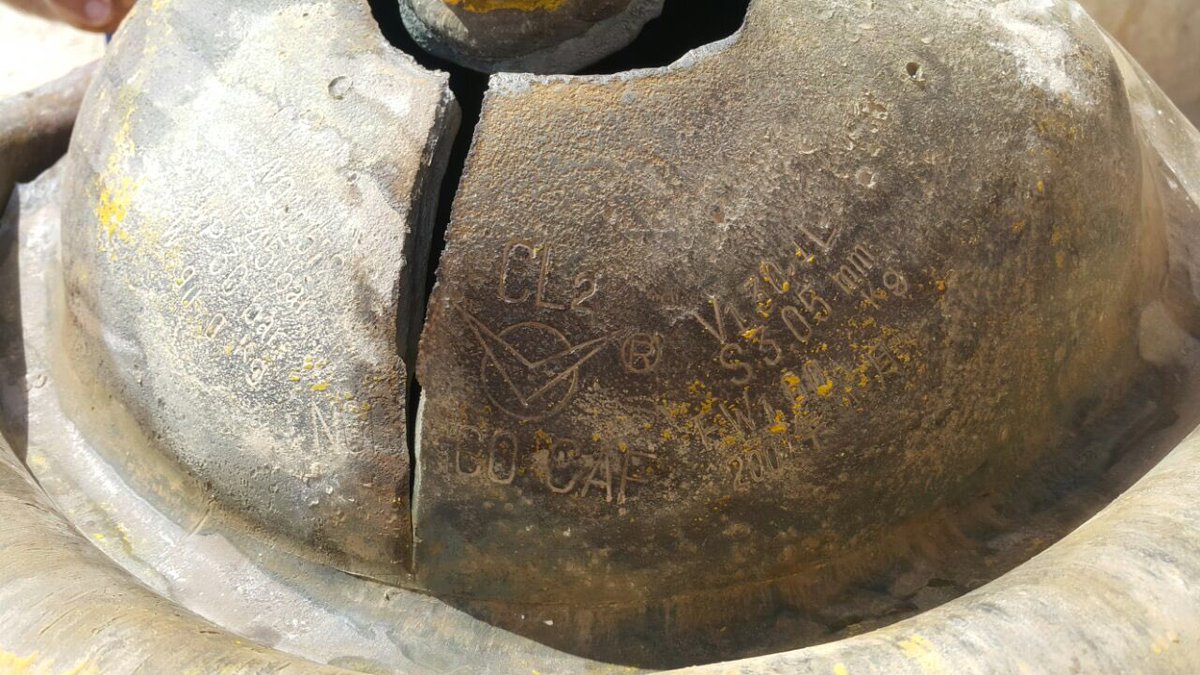
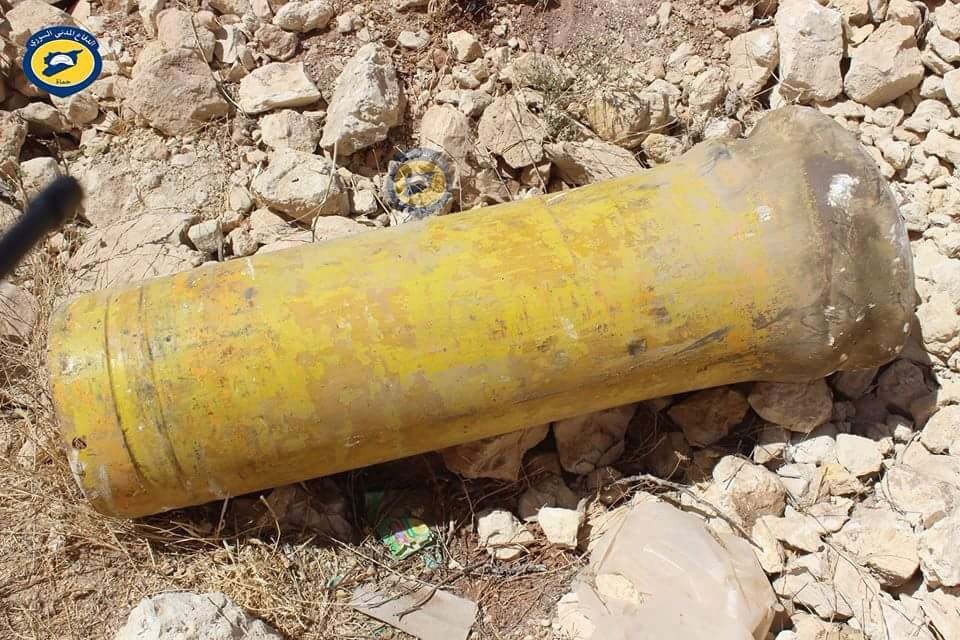
This type of gas cylinder was seen in attacks that occurred in the Hama region, and Kafr Zita, in 2014 during the first spate of chlorine gas attacks, some of which have now been confirmed by the OPCW/UN as being executed by government forces. Daniele Raineri provided a series of photographs from the 2014 attack sites, which include this image showing the markings, clearly the same style of markings as seen in the recent attack.
While the cylinders are marked Norinco, the Norinco company has denied the gas cylinders are their product in a 2014 statement following the earlier chlorine attacks in Syria, claiming the logo on the gas cylinders does not match with the company logo:
“A comparison of the photos and video footage released by some media led to our discovery that the LOGO printed on those chlorine gas cylinders is not the LOGO of NORINCO in that their pattern and way of application is evidently different from our standard way of doing it (see attached picture). NORINCO shall reserve the right to take legal action against any entity or individual that presumptuously issue false reports and damage our corporate image and reputation.”
In previous attacks it appears gas cylinders were placed inside barrel bomb casings, but with this attack no barrel bomb casing has been photographed or filmed.
Other photos provided by Mahmoud Sultan from the White Helmet’s team in Hama:
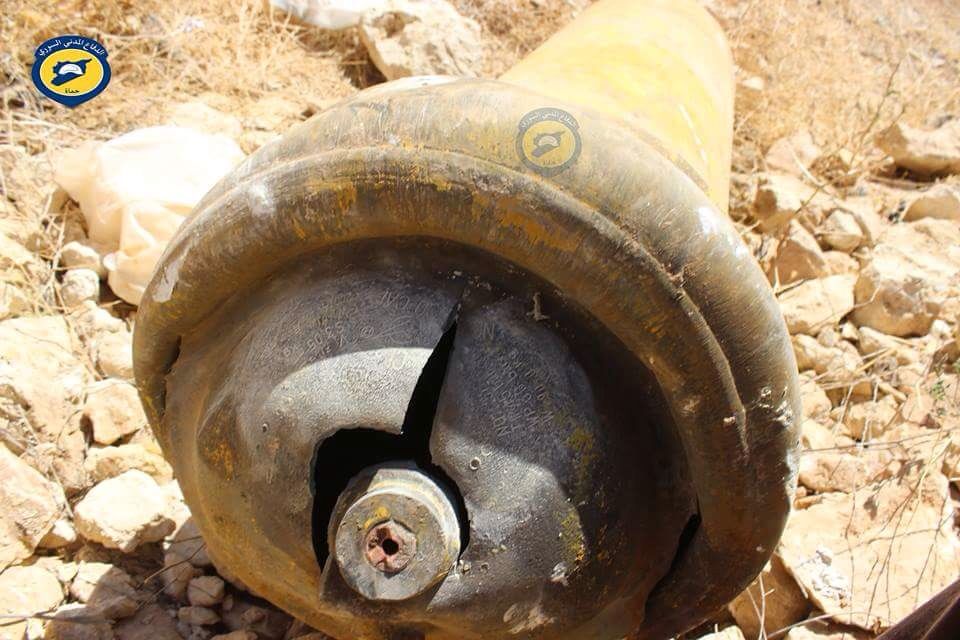
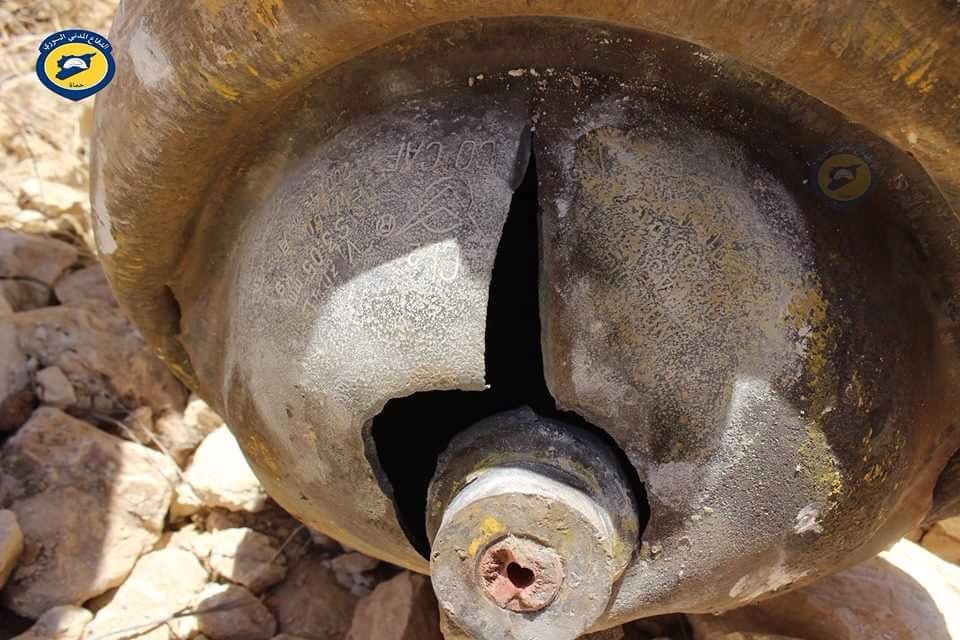
Conclusion
Based on the above information it seems highly likely that the above attack was yet another chlorine attack, with many similarities to previous chlorine barrel bomb attacks linked to the Syrian government and covered by the OPCW/UN investigations on chemical attacks in April 2014 in Kafarzita. The chlorine cylinders are consistent with other chlorine attacks from 2014, with the same markings indicated they were produced by China North Industries Corporation (NORINCO). However, it is worth noting Norinco denies the cylinders are produced by Norinco, and as yet there have been no images of cylinders with the same markings found outside of the images from the chlorine attacks from Syria. Below are details about it from the OPCW/UN report
‘In at least one case, the information of a manufacturer was clearly embossed into a cylinder, together with “CL2” indicating the presence of chlorine, which is within the industrial norm. In most of the other cases, such details of the inner cylinder could not be seen.’
We can clearly see the CL2 marking from the images of this attack above. It is important to note that with this attack there is no sign of a barrel bomb casing, or any sort of explosion. In some earlier attacks there were clear examples of gas cylinders being placed in standard barrel bomb casings, and examples where explosive det cord had been wrapped around the nozzle of the gas cylinder. In the case it seems that gas cylinder was just dropped from a great height, likely relying on the impact to rupture the cylinder and release the gas.
